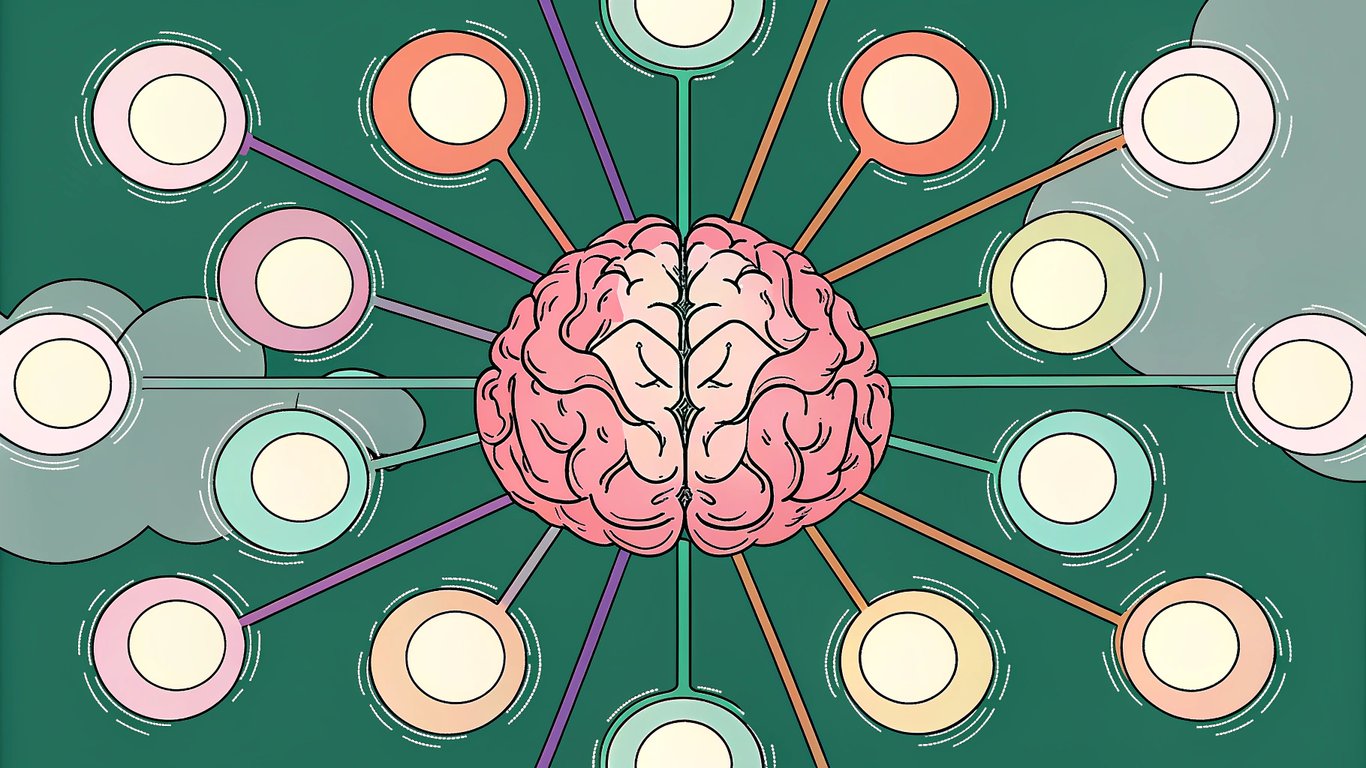Content management has transformed dramatically over the past few years. What started as simple publishing platforms have evolved into sophisticated systems that leverage artificial intelligence to streamline workflows, optimize performance, and enhance user experiences. Modern content management isn't just about storing and displaying content anymore. It's about creating intelligent systems that can predict, adapt, and optimize content delivery in real-time.
For content managers and editors working with blogs today, understanding this shift is crucial. Traditional content management systems focused primarily on basic publishing functions. You'd write content, format it, and publish it. Modern AI-first platforms go several steps further by analyzing content performance, suggesting improvements, and even automating certain aspects of content creation and optimization.
Evolution from Traditional CMS to AI-First Platforms

Traditional content management systems like early versions of WordPress were built around a simple premise: give users a way to publish content without coding. These systems worked well for basic blogging and website management, but they required significant manual effort for optimization, SEO, and performance monitoring.
AI-first platforms represent a fundamental shift in approach. Instead of treating content management as a purely manual process, these systems integrate machine learning algorithms that can analyze content patterns, user behavior, and performance metrics to make intelligent recommendations. They can automatically optimize headlines for better click-through rates, suggest related content, and even identify gaps in your content strategy.
The difference becomes clear when you compare workflows. In traditional systems, you might spend hours manually researching keywords, optimizing meta descriptions, and analyzing which content performs best. Modern AI-enhanced platforms can handle much of this work automatically, freeing up content teams to focus on strategy and creativity.
Key Characteristics of AI-First Content Management
AI-first content management systems share several defining characteristics that set them apart from traditional platforms. These features work together to create a more intelligent, efficient content creation and management experience.

- Automated content optimization based on performance data
- Intelligent tagging and categorization of content
- Predictive analytics for content performance
- Personalized content recommendations for different audience segments
- Real-time SEO suggestions and improvements
- Automated social media scheduling and cross-platform publishing
These systems don't just store your content. They actively work to improve it. For example, they might analyze which headlines perform best for your audience and suggest similar structures for new posts. Or they could identify trending topics in your industry and recommend content ideas that align with your brand voice and expertise.
The Role of Machine Learning in Content Operations
Machine learning algorithms form the backbone of modern content management systems. These algorithms continuously analyze vast amounts of data to identify patterns and make predictions about content performance. They examine factors like user engagement, time spent on page, social shares, and conversion rates to understand what resonates with your audience.
The practical impact is significant. Instead of guessing which topics might perform well, ML algorithms can analyze your historical content performance alongside industry trends to suggest topics with high potential. They can also optimize publishing schedules by identifying when your audience is most active and engaged.
Core Components of Modern Content Management Systems

Modern content management systems are built on fundamentally different architectures than their predecessors. Understanding these core components helps content managers make informed decisions about which platforms and tools will best serve their needs.
Headless and API-First Architecture
Headless content management systems separate the content creation and management backend from the frontend presentation layer. This architecture offers significant advantages for AI-first publishing because it allows content to be delivered to multiple channels simultaneously while maintaining consistency and enabling advanced personalization.
API-first design means that all system functions are accessible through programming interfaces, making it easier to integrate AI tools and third-party services. This flexibility is essential for modern content operations that often rely on multiple specialized tools working together.
For WordPress publishers, this might mean using WordPress as a content creation interface while delivering content through faster, more flexible frontend systems. Companies like Gatsby and Next.js have built solutions specifically for this approach.

Intelligent Content Creation and Editing Tools
Modern content management platforms integrate AI-powered writing assistants that go beyond basic grammar checking. These tools can suggest content improvements, optimize for readability, and even help generate ideas based on trending topics and audience interests.
Smart content suggestions analyze your existing content library to recommend internal linking opportunities, related topics to cover, and gaps in your content strategy. Some systems can even automatically generate meta descriptions, alt text for images, and social media posts based on your main content.
Advanced Analytics and Performance Monitoring
Traditional analytics tools show you what happened after the fact. Modern content management systems provide real-time insights and predictive analytics that help you make better decisions before publishing. They can predict which content is likely to perform well, identify optimal publishing times, and suggest improvements based on similar high-performing content.

These systems also provide deeper audience insights, showing not just page views and time on site, but content engagement patterns, user journey analysis, and conversion attribution across multiple touchpoints.
WordPress in the Modern Content Management Landscape
WordPress powers over 40% of all websites on the internet, making it the most popular content management system by far. But how does this traditional platform fit into the modern, AI-first content management landscape? The answer is more complex than you might expect.
WordPress's AI Integration Capabilities
WordPress has made significant strides in integrating AI capabilities, particularly through its plugin ecosystem. The platform's open architecture makes it relatively easy to add AI-powered features through third-party integrations and specialized plugins.
Recent WordPress updates have also introduced native features that work well with AI tools. The block editor (Gutenberg) provides a structured content format that AI systems can more easily analyze and optimize. This structured approach makes it easier to implement automated SEO improvements, content suggestions, and performance optimizations.
Limitations and Challenges of Traditional WordPress
Despite its popularity, traditional WordPress installations face several challenges in AI-first environments. The platform's monolithic architecture can make it difficult to implement advanced AI features without significant customization. Performance can also be an issue when running multiple AI-powered plugins simultaneously.
Security considerations become more complex when integrating multiple AI tools and third-party services. Each additional plugin or integration potentially introduces new vulnerabilities that need to be managed and monitored.
Hybrid Approaches: WordPress + Modern Tools
Many successful publishers are adopting hybrid approaches that combine WordPress's content creation strengths with modern AI-powered tools and headless delivery systems. This approach allows teams to keep familiar WordPress workflows while gaining access to advanced AI capabilities.
For example, you might use WordPress for content creation and team collaboration while employing headless delivery for better performance and AI-powered personalization. This setup provides the best of both worlds: familiar tools for content creators and advanced capabilities for technical optimization.
Recommended Operational Models for WordPress Publishers
Successfully implementing modern content management requires more than just adopting new tools. It requires rethinking your entire operational approach to content creation, management, and optimization. Here are proven operational models that work well for WordPress-based publishing operations.
The AI-Assisted Editorial Workflow Model
The most effective AI-assisted editorial workflows integrate artificial intelligence at key decision points while maintaining human oversight and creativity. This model typically follows a structured process that leverages AI for research, optimization, and performance monitoring while keeping humans in control of strategy and final content decisions.
- AI-powered topic research and trend analysis
- Human-driven content strategy and planning
- AI-assisted content creation and optimization
- Human editorial review and brand alignment
- Automated publishing and distribution
- AI-powered performance monitoring and optimization
This workflow ensures that AI tools enhance human capabilities rather than replace them. Content creators can focus on strategy, creativity, and brand voice while AI handles time-consuming tasks like keyword research, SEO optimization, and performance analysis.
Team Structure and Role Definitions
Modern content teams need different skill sets than traditional publishing operations. While writing and editing skills remain important, teams also need members who understand AI tools, data analysis, and technical integrations.
| Role | Traditional Responsibilities | Modern AI-Enhanced Responsibilities |
|---|---|---|
| Content Manager | Editorial calendar, team coordination | AI tool management, workflow optimization, performance analysis |
| Content Creator | Writing, research, basic SEO | AI-assisted research, content optimization, multi-channel adaptation |
| Editor | Proofreading, fact-checking | Brand consistency, AI output review, quality assurance |
| Technical Lead | Website maintenance, plugin updates | AI integration, API management, performance optimization |
Quality Control and Brand Consistency Frameworks
Maintaining quality and brand consistency becomes more challenging when using AI tools, but it's also more important than ever. Successful publishers develop clear frameworks that define when and how AI tools should be used, what level of human review is required, and how to maintain brand voice across AI-assisted content.
These frameworks typically include content guidelines that specify acceptable AI use cases, review processes for AI-generated content, and quality metrics that account for both efficiency gains and content quality maintenance.
Technology Stack and Tool Integration
Building an effective AI-enhanced content management system requires careful selection and integration of tools that work well together. The key is choosing solutions that complement each other rather than creating a complex, difficult-to-manage technology stack.
Essential AI-Powered WordPress Plugins
Several WordPress plugins have emerged as essential tools for AI-enhanced content management. These plugins typically focus on specific aspects of content optimization, from SEO to performance monitoring to content suggestions.
When selecting plugins, prioritize those that integrate well with your existing workflow and provide clear value without overwhelming your team with complexity. The best AI-powered plugins work quietly in the background, providing suggestions and optimizations without disrupting the content creation process.
Third-Party AI Tools and API Integrations
Many of the most powerful AI capabilities for content management come from specialized third-party tools that integrate with WordPress through APIs. These tools often provide more advanced features than WordPress plugins because they're built specifically for AI-powered content operations.
Popular categories include content research tools that analyze trending topics and competitor content, writing assistants that help optimize content for specific audiences, and analytics platforms that provide deeper insights into content performance and audience behavior.
Performance Optimization and Scalability Solutions
AI-enhanced content management systems often require more server resources than traditional setups, particularly when running multiple AI-powered tools simultaneously. Planning for performance and scalability from the beginning prevents problems as your content operation grows.
Consider hosting solutions that are optimized for WordPress and can handle the additional load from AI tools. Content delivery networks (CDNs) become even more important when serving personalized content to different audience segments.
Implementation Strategy and Best Practices
Successfully transitioning to modern, AI-enhanced content management requires careful planning and phased implementation. Rushing the process often leads to team confusion, workflow disruption, and suboptimal results.
Migration Planning and Phased Implementation
The most successful implementations follow a phased approach that gradually introduces AI tools and new workflows without disrupting existing operations. Start with tools that provide immediate value with minimal learning curve, then gradually add more sophisticated capabilities as your team becomes comfortable with AI-assisted workflows.
Begin with content optimization tools that work behind the scenes, then move to AI-assisted research and writing tools, and finally implement advanced analytics and personalization features. This approach allows your team to adapt gradually while maintaining productivity throughout the transition.
Training and Change Management
Team training is crucial for successful implementation of AI-enhanced content management. Focus on helping team members understand how AI tools can enhance their existing skills rather than replace them. Provide hands-on training with real projects rather than abstract demonstrations.
Change management becomes particularly important when implementing AI tools because team members may have concerns about job security or workflow disruption. Address these concerns directly by showing how AI tools can eliminate tedious tasks and allow team members to focus on more creative, strategic work.
Measuring Success and ROI
Measuring the success of AI-enhanced content management requires tracking both efficiency gains and content quality improvements. Traditional metrics like page views and time on site remain important, but you'll also want to measure workflow efficiency, content production speed, and optimization effectiveness.
Key performance indicators might include time saved on content research and optimization, improvement in search rankings, increase in content engagement rates, and overall team productivity gains. The goal is to demonstrate that AI tools are providing tangible value that justifies their cost and complexity.
Future Outlook and Emerging Trends
The content management landscape continues to evolve rapidly as AI technologies become more sophisticated and accessible. Understanding emerging trends helps content managers prepare for future developments and make strategic decisions about technology investments.
Emerging AI Technologies in Content Management
Several emerging technologies promise to further transform content management in the coming years. Multimodal AI systems that can work with text, images, and video simultaneously will enable more sophisticated content creation and optimization. Advanced natural language processing will make AI writing assistants more nuanced and brand-aware.
Autonomous publishing systems that can handle entire content workflows with minimal human intervention are also on the horizon, though they'll likely remain focused on specific content types and use cases rather than replacing human creativity entirely.
Preparing for the Next Evolution
The most successful content operations will be those that remain flexible and adaptable as new technologies emerge. Focus on building systems and workflows that can incorporate new tools without requiring complete overhauls. Invest in team training and development to ensure your people can work effectively with evolving AI capabilities.
Most importantly, remember that technology should serve your content strategy, not drive it. The best AI-enhanced content management systems amplify human creativity and expertise rather than replacing them. As these technologies continue to evolve, the organizations that maintain this human-centered approach while embracing technological capabilities will be best positioned for long-term success.



